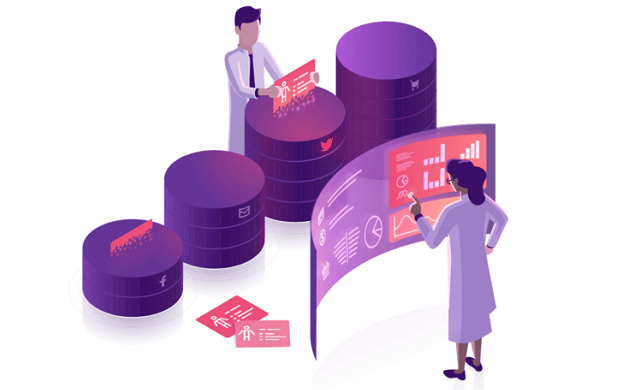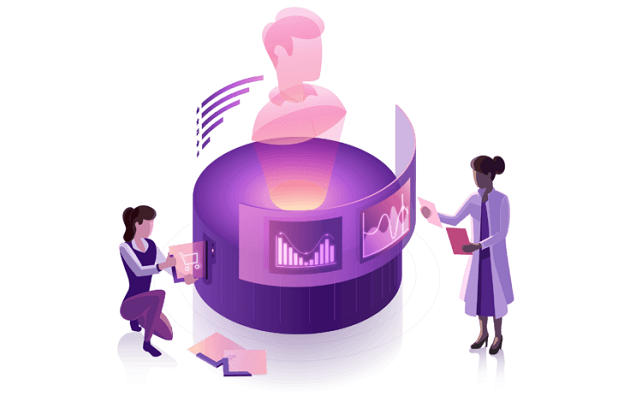* – This article has been archived and is no longer updated by our editorial team –
Below is our recent interview with Ravi Parikh, Co-Founder and COO Heap:

Q: Could you provide our readers with a brief introduction to Heap?
A: We empower companies to focus on what matters — discovering insights and taking action — not building pipelines or tagging. Our software automatically collects, organizes, analyzes, and connects customer data, so you can remove technical bottlenecks and actually get a full picture of your customers and how they use your product and website.
Q: What are the benefits of using your product?
A: At most companies, data teams spend up to 80% of their time on data prep work prior to actually doing data science. This is time spent collecting data, cleaning that data, integrating it with other sources, building and maintaining data pipelines across a multitude of data silos, and so on. But data teams universally would rather spend their time answering interesting analytical questions and truly doing data science.
Heap’s mission is to automate as much of this data prep work as possible to unleash the potential of some of your company’s most valuable people. Heap automatically captures all of your organization’s user behavior data with no extra code, solving the data collection problem. Heap also provides a flexible data virtualization layer in which users can rename and re-schematize data to fit their needs without writing code. Finally, Heap automates the ETL of that data downstream to a warehouse.
With Heap, teams don’t spend tons of time implementing tracking code or maintaining ETL pipelines. They’re finally getting actual value from their data, which frees them up to do more interesting work.
 Recommended: Powered Now Aims To Revolutionize The Construction Industry And Help Small Businesses Get Their Paperwork Together
Recommended: Powered Now Aims To Revolutionize The Construction Industry And Help Small Businesses Get Their Paperwork Together
Q: Why is building your own customer data platform so hard?
A: Building a customer data platform is a huge undertaking, albeit an exciting one. Data teams should go into the process with their eyes wide open.
First, a build-your-own CDP is a long-term investment — both for the business as it exists today and for how it will exist in the future. As experimentation and iteration accelerates, your in-app, email, website, and experimentation data changes. Keeping up with these changes and maintaining data collection pipelines requires extensive engineering resources. If you’re not ready for this investment, an off-the-shelf CDP might be a more appropriate choice.
Also, joining disparate datasets with different schema can be incredibly hard. For example, data from email is delivered in a different schema than data from an experimentation tool. And all the data arrives in your warehouse at different times, which makes it almost impossible to reconcile it all.
Heap can streamline the build-your-own CDP process with Customer Data as a Service (CDaaS). It’s the best way to bring clean, complete customer data into your company’s source of truth. It autocaptures imports critical behavioral event streams, including web, app, email, CRM, and experimentation data. It fully cleanses and normalizes the data, and enables you to model and verify the data by separating event definitions from raw data.
Q: What’s the best way to speed up data-driven decisions?
A: Being data-driven in your decision making is absolutely critical — but it can be a tail that wags the dog. If you’re using endless data analysis as a way to procrastinate or avoid a hard decision, there’s often a severe opportunity cost.
Make sure that your organization shares data across silos. You can’t be the data gatekeeper and still expect the business as a whole to be able to be agile and make good decisions.
I also recommend an experimentation mindset. Using an A/B testing tool like Optimizely paired with an advanced analytics tool can help. If you’re using Heap to capture customer behavior upfront, you can save the time of tagging each variant, so you can run tests more frequently and see the results immediately. You can also create events on-the-fly without impacting the data itself, so you can dig into custom insights without waiting days or weeks.
 Recommended: Monkey Group’s Mission Is To Help Restaurant Operators Grow Sales And Increase Profits
Recommended: Monkey Group’s Mission Is To Help Restaurant Operators Grow Sales And Increase Profits
Q: What are your plans for the future?
A: There are a ton of really exciting developments on our product roadmap.
One ongoing initiative is to extend the power of our automated data capture and virtualization technology into more and more silos of customer data. Today, Heap captures data across websites, native mobile apps, and 20+ third-party data sources, and has flexible APIs for sending data from other areas. Over time, we want to add more direct automated integrations into more third-party sources.
Another major initiative is to extend our data-out capabilities. Right now, the primary way of getting data out of Heap is Heap Connect, which allows for automated batch ETL of virtualized Heap data downstream to any warehouse. We’re currently exploring ways to get data-out in real time, whether to a data warehouse or via a real-time webhook.
Finally, a big area for us to explore is how we can incorporate machine learning to further our mission. A big value proposition of Heap is automatically capturing every user interaction, but the next logical step is to infer from that massive set of data what interactions are of interest. In the future, Heap will not only offer a virtualized data modeling layer, but will also give users suggestions on how they should think about modeling their data based on the signals Heap has auto-detected among the noise.
Activate Social Media:


